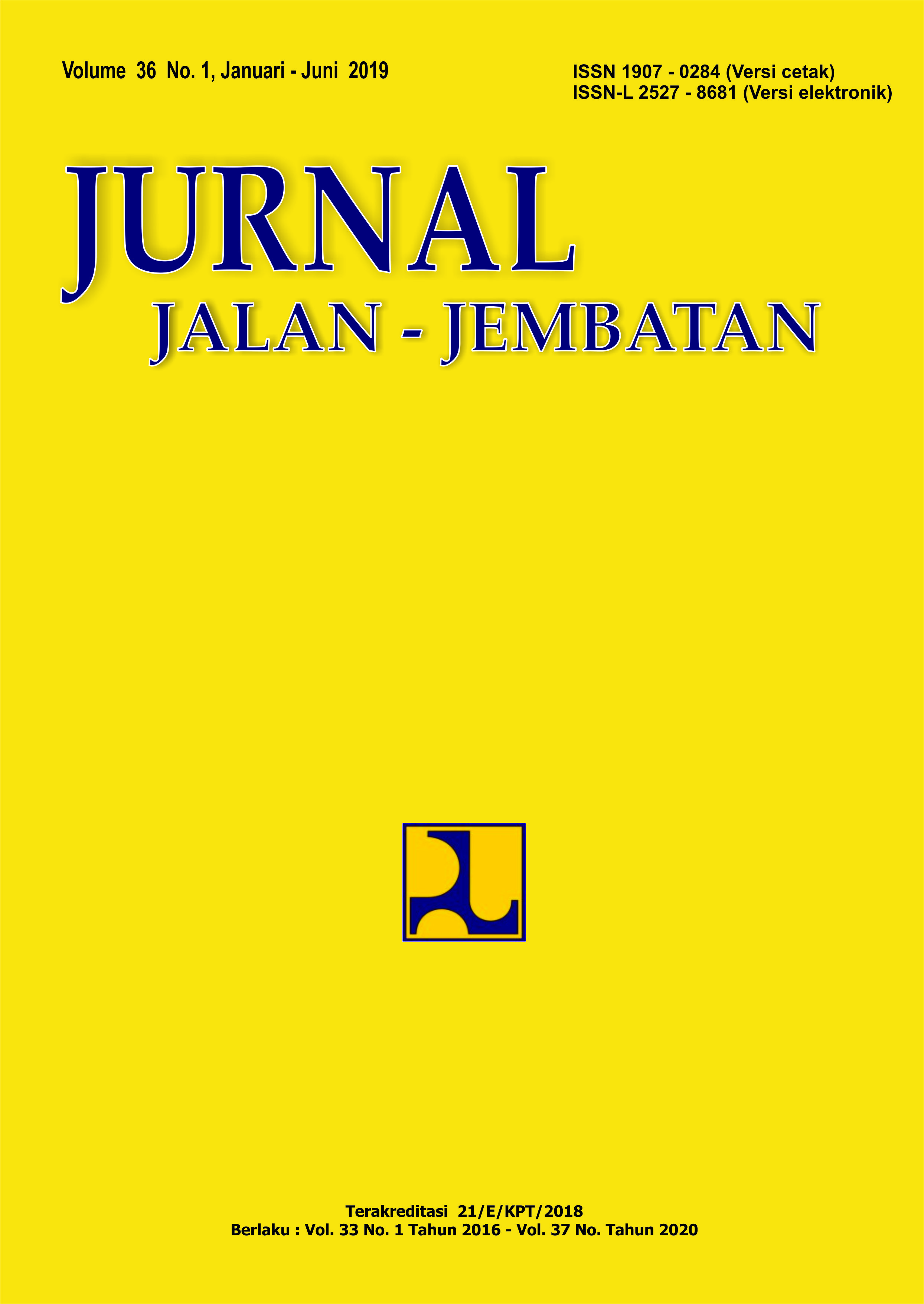POTENSI PEMANFAATAN BAHAN LIMBAH FLY ASHDAN BOTTOM ASH UNTUK LAPISAN PONDASI SEMEN JALAN
Main Article Content
Abstract
ABSTRACT
The existence of road infrastructure has on important role in supporting activities, such as economic, social, educational and tourism. The construction of road infrastructure in Indonesia from the last 4 years has increased.In its implementation, problems were found, including the availability of standard materials and asphalts import were decreased, while the needs for whole regions in Indonesia continued to increase.The availability of remains material or waste material is an alternative problem, which has not been able to be used as a solution to overcome the limitations of road materials due to the absence of standardized reference.For this reason, this paper expected to solve the problem of the potential utilization of fly ash and bottom ash for foundation layers. Implementation of activities carried out at the laboratory scale, Fly Ash and bottom ash sources from the Pangkal Pinang, Ombilin (units 1 and unit 2) and Sibolga PLTU, were stabilized by cemen is obtained.The FABA test results from Sibolga include Type F so that when stabilized cement contributes to the strength or the value of free compressive strength UCS 33 Kg / Cm2. As for FABA from Pangkal Pinang 19 Kg / cm2 and Ombilin, both Unit 1 and Unit 2 Ombilin including type C, the compressive strength test results were around 8 Kg / cm2 in each stabilized with 8% cement.
Keywords: Utilization, fly ash, bottom ash, cement foundation layer
Article Details
Authors who publish in this journal agree to the following terms:
-
Authors retain copyright and grant the journal the right of first publication with the work simultaneously licensed under a Creative Commons Attribution License, which allows others to share the work with acknowledgment of the work's authorship and initial publication in this journal.
-
Authors may enter into additional contractual arrangements for the non-exclusive distribution of the journal's published version of the work (e.g., post it to an institutional repository or publish it in a book), with acknowledgment of its initial publication in this journal.
-
Authors are permitted and encouraged to post their work online (e.g., in institutional repositories or on their website) as it can lead to productive exchanges, as well as earlier and greater citation of the published work.
Each submitted manuscript must be accompanied by a "Manuscript Originality Statement" and a "Copyright Transfer Statement".

